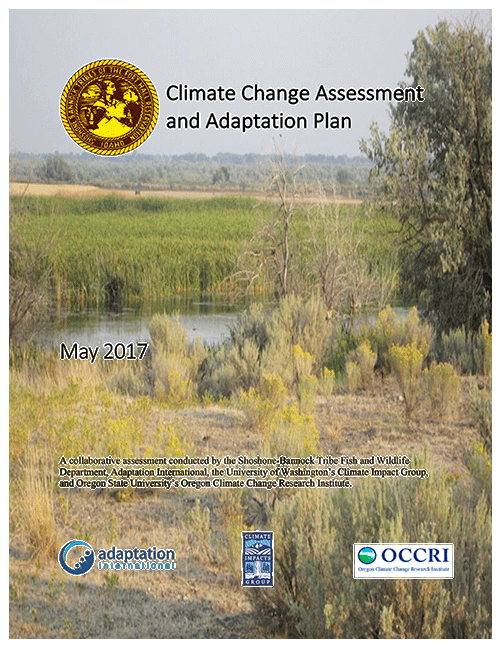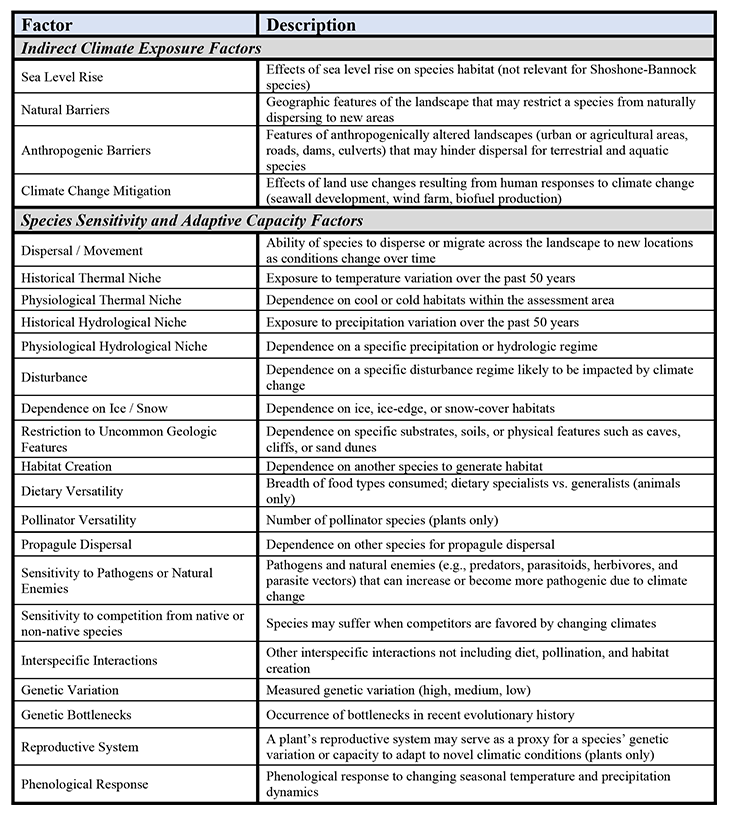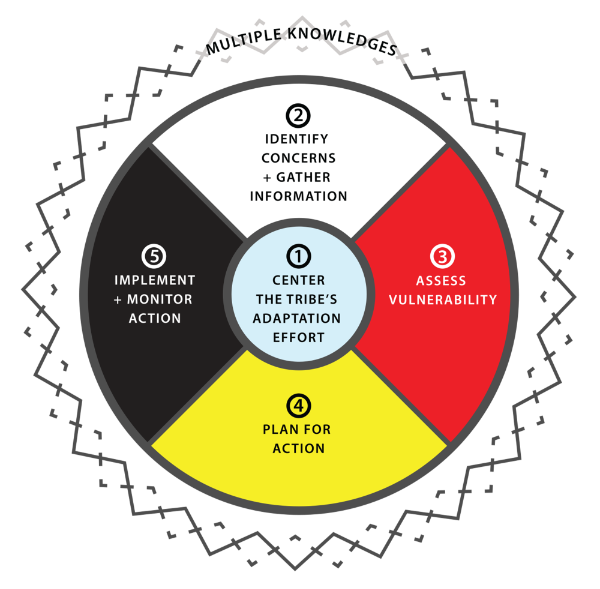Shoshone-Bannock Tribes
“I cherish my reservation, just because that is where my family is… So, when I think about my position here, I think about managing in a way that they have something in the future to manage themselves.”
—Elese Teton, Tribal Water Engineer, Shoshone-Bannock Tribes.[10]

The Shoshone-Bannock Tribes of the Fort Hall Reservation completed a natural resource-focused climate change vulnerability assessment and adaptation plan[11] using Nature Serve’s Climate Change Vulnerability Index and tribal staff expertise. The Tribes partnered with Adaptation International, Oregon State University, and the University of Washington to complete the assessment.
Climate Exposure: Climate change exposure relied on analysis of detailed, localized climate projections for the project region selected by the Tribes. This customized and locally specific analysis—which included a summary of projected changes to temperature, precipitation, and snowpack—was augmented with existing projections of changes to streamflow, wildfire regimes, and pest outbreaks.
Vulnerability Assessment: The Tribes’ vulnerability assessment centered on Nature Serve’s Climate Change Vulnerability Index (CCVI). The process involved combining Western biological literature on the species of concern with Traditional Knowledges (TKs) of Tribal members who participated in the Core Team to evaluate 19 different factors (Figure 7) that affect species sensitivity and adaptive capacity. Each factor was assigned to one of five categories based on how those factors affect species vulnerability: Unknown, Neutral, Somewhat Increase, Increases, and Greatly Increases Vulnerability. The Tribes reviewed the initial rankings assigned by project partners, making changes as necessary to incorporate TKs and refine the assessment. The project found the ability of the species and surrounding system to respond to climate exposures played a key role in determining the relative vulnerability of the species.

Risk Analysis and Selecting Planning Areas: The Shoshone-Bannock Tribes did not conduct a traditional risk assessment focused on identifying the magnitude and likelihood of consequences to determine where to focus their climate adaptation planning efforts. Instead, the Tribes assigned scores for each species using the following criteria:
- vulnerability—as a relative measure of how the species are likely to be affected by changing climate conditions;
- likelihood of impacts—probability based on expert judgment that the impact will occur in a specific time period;
- unique value of the species—considering the social, cultural, and economic values of the species and assigning higher scores to species that have higher values; and
- synergies with internal and external resources and processes—consideration of on-going resilience or planning efforts so as not to miss a “window of opportunity” to develop strategies in support of an ongoing effort.
